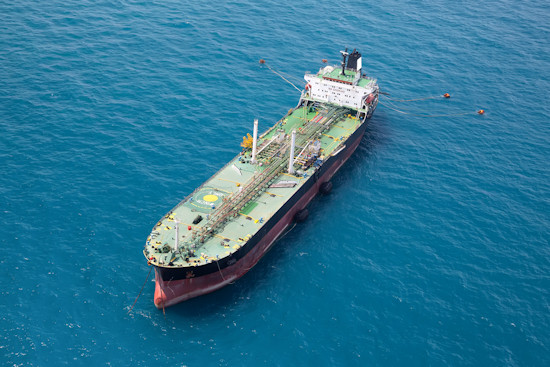
In the world of maritime trade, snagging the right tanker is all about knowing the nitty-gritty – from what it’s carried in the past to how it’ll handle future environmental rules. So, let’s roll up our sleeves and dive into the 50 must-know factors before you sign on the dotted line. Most of these you know but you will probably see some that you may have overlooked.
- Compatibility with Specific Cargo Types: Assess whether the tanker is suited for the specific type of cargo you intend to transport. This includes chemical tankers, oil tankers, LNG (Liquefied Natural Gas) carriers, etc. Each type of cargo requires different specifications and safety features.
- Ice Class Rating: If your routes involve icy waters, the ice class rating of the tanker is crucial. This rating indicates the ship’s ability to navigate through varying degrees of ice-covered waters.
- Cargo Heating Capabilities: For certain cargoes, maintaining a specific temperature is vital. Ensure the tanker has adequate and efficient cargo heating systems if you’re transporting temperature-sensitive liquids.
- Inert Gas System (IGS) and COW (Crude Oil Washing) Systems: These systems are critical for safety and efficiency in oil tankers. An IGS reduces the risk of fire in cargo tanks, while COW systems help in cleaning the tanks and reducing the amount of cargo residue.
- Ballast Water Treatment System: With strict international regulations on ballast water to prevent environmental contamination, ensure the tanker has a compliant ballast water treatment system.
- Corrosion Protection Systems: Check for advanced corrosion protection, especially in cargo tanks and ballast tanks, as corrosion can significantly impact a tanker’s lifespan and safety.
- Vapor Recovery Systems: These systems are essential for tankers carrying volatile cargoes. They capture and treat vapor emissions from the cargo, essential for both safety and environmental compliance.
- Hull Configuration and Coating: The hull design and its coating can impact fuel efficiency and maintenance needs. Some coatings offer better protection against marine growth and corrosion, reducing maintenance costs.
- Technological Upgrades: Assess the integration of modern technology for navigation, communication, and operational efficiency. Advanced technology can mean better operational efficiency and compliance with regulatory standards.
- Environmental and Regulatory Compliance: Ensure the tanker is up to date with the latest environmental regulations like MARPOL Annex VI for emissions. Non-compliance can result in significant fines and operational restrictions.
- Historical Performance Data: Look for historical performance data like fuel consumption, average speed, and efficiency in different conditions. This data can give insights into the ship’s operational cost-effectiveness.
- Mooring Equipment Condition: Thoroughly inspect the condition of the mooring equipment, which is crucial for the safe berthing of the tanker.
- Dual Fuel Capability: Check if the tanker has dual fuel capabilities, allowing it to switch between different types of fuel, like marine diesel and LNG. This can offer flexibility in operations and potentially lower fuel costs.
- Dynamic Positioning System: For certain operations, like offshore loading, having a dynamic positioning system can be a significant advantage. This system allows the tanker to maintain its position without anchoring.
- Propulsion and Engine Efficiency: Beyond the standard assessment, delve into the specifics of the propulsion system’s efficiency and potential for upgrades or retrofits to more efficient systems.
- Hazardous Area Compliance: Evaluate the tanker’s compliance with safety standards for hazardous areas, especially if it’s intended to transport highly flammable or explosive materials.
- Slop Tank Capacity: Assess the capacity and condition of slop tanks, which are used to store oil residue and mixtures from cargo tanks. Larger slop tank capacities offer more flexibility and safety in cargo management.
- Cargo Pumping System Efficiency: Examine the efficiency and condition of the cargo pumping system. Faster and more efficient systems can significantly reduce port turnaround time.
- Vibration and Noise Levels: Consider the levels of vibration and noise, as these can impact crew comfort and fatigue, and in the long term, the structural integrity of the tanker.
- Crew Amenities and Accommodations: The quality and condition of crew accommodations can impact crew morale and efficiency. Well-designed living spaces are important for long voyages.
- Tank Coating Compatibility: Different cargoes may require specific tank coatings to prevent contamination or corrosion. Ensure the coatings are compatible with the intended cargo types.
- Cargo Handling Equipment: Assess the condition and capabilities of cargo handling equipment, including hoses, pumps, and arms. Efficient cargo handling can significantly impact operational efficiency.
- Bow Thruster Performance: Examine the condition and performance of bow thrusters, which are crucial for maneuvering the vessel in tight docking situations or strong currents.
- Fuel Consumption at Different Speeds: Look at the ship’s fuel efficiency across a range of speeds. This can give a clearer picture of operational costs under varying conditions.
- Anti-Piracy Features: Depending on the operating regions, anti-piracy features (like secure access to the bridge, water cannons, etc.) might be important for crew safety and insurance costs.
- Cargo Hold Accessibility for Inspections: Check how easily the cargo holds can be accessed for inspections and maintenance. Easier access can reduce downtime and maintenance costs.
- Automation Systems: Evaluate the level of automation, including alarm and monitoring systems. Advanced automation can reduce the need for a large crew and enhance safety.
- Communication and Navigation Equipment Upgradeability: Ensure that navigation and communication equipment can be easily upgraded to meet future technological standards.
- Emergency Response Equipment: Assess the quality and availability of emergency response equipment, including firefighting systems and life-saving appliances.
- Tanker’s Maneuverability in Different Conditions: Consider how well the tanker maneuvers in various sea states and weather conditions. Good maneuverability can reduce the risk of accidents and enhance operational flexibility.
- Fleet Compatibility: Evaluate how the tanker will fit into your existing fleet in terms of operational capability and efficiency. Compatibility with your fleet’s logistical and operational patterns is important.
- Fuel Efficiency Technology: Look for advanced technology that improves fuel efficiency, as fuel costs are a significant part of operational expenses.
- Crew Training and Familiarization Requirements: Consider the level of training your crew will need to operate the tanker effectively. Advanced systems might require more specialized training.
- Insurance and Liability Considerations: Understand the insurance implications and liability issues associated with different types of tankers, particularly if they are designed to carry hazardous materials.
- Flexibility for Various Cargo Types: If you plan to transport different types of liquids, the tanker’s flexibility to handle various cargoes without contamination risk is crucial.
- Availability of Spare Parts and Technical Support: Evaluate the ease of obtaining spare parts and technical support for the tanker, especially if it’s an older model or has unique features.
- Redundancy in Critical Systems: Check for redundancy in essential systems like navigation, propulsion, and communication, which can enhance safety and reduce downtime.
- Port Restrictions and Accessibility: Consider the tanker’s size and draft in relation to the ports you intend to access. Some tankers might be too large for certain ports or waterways.
- Environmental Impact and Carbon Footprint: Look into how the tanker aligns with current and anticipated environmental regulations, including its carbon footprint and potential for eco-friendly upgrades.
- Satellite and Communication Capabilities: Evaluate the tanker’s communication systems for long voyages, including satellite phones, internet connectivity, and other communication technologies that can keep the ship connected and safe.
- Current and Future Regulatory Compliance: Ensure the tanker meets current international and regional regulations and is adaptable to potential future changes, especially in environmental standards.
- Resale Value and Market Demand: Investigate the potential resale value and market demand for the type of tanker you are considering. Some tanker types may have better resale prospects due to market trends.
- Tanker’s Trading History: A review of the tanker’s trading history can give insights into its profitability and operational effectiveness.
- Structural Modifications and Upgrades: Assess any structural modifications or upgrades the tanker has undergone, which could affect its operational efficiency and compliance with regulations.
- Speed and Consumption Performance: Understand the tanker’s performance in terms of speed and fuel consumption under different operational conditions.
- Lifespan and Longevity: Consider the expected remaining lifespan of the tanker and potential future maintenance or refurbishment costs.
- Compatibility with Port Facilities: Ensure that the tanker is compatible with the port facilities where it will be operating, in terms of both size and equipment.
- Cargo Handling Speed and Efficiency: Evaluate the efficiency and speed of the tanker’s cargo handling systems, as this can impact turnaround times in port.
- Bunkering Capacity and Flexibility: Consider the tanker’s bunkering capacity and flexibility, especially if operating on long routes or in areas with limited refueling options.
- Security and Anti-Hijacking Features: In regions where piracy or hijacking is a concern, evaluate the tanker’s security measures and anti-hijacking features.
And there you have it – the 50 things to tick off your list when shopping for a tanker. Buying one of these maritime giants isn’t just a matter of price tags and sizes. It’s about making a smart call on something that’s going to be part of the global shipping scene for years to come. With these pointers in your pocket, you’re not just investing in a ship; you’re steering towards a safer, more efficient, and greener future on the high seas. Remember, the maritime world is always changing, so keeping these tips in mind will help you stay afloat and make a splash with your next big tanker purchase.


